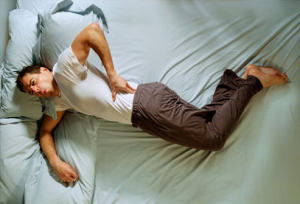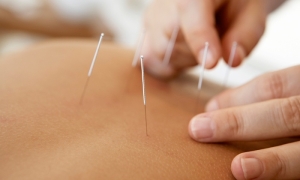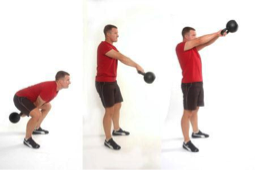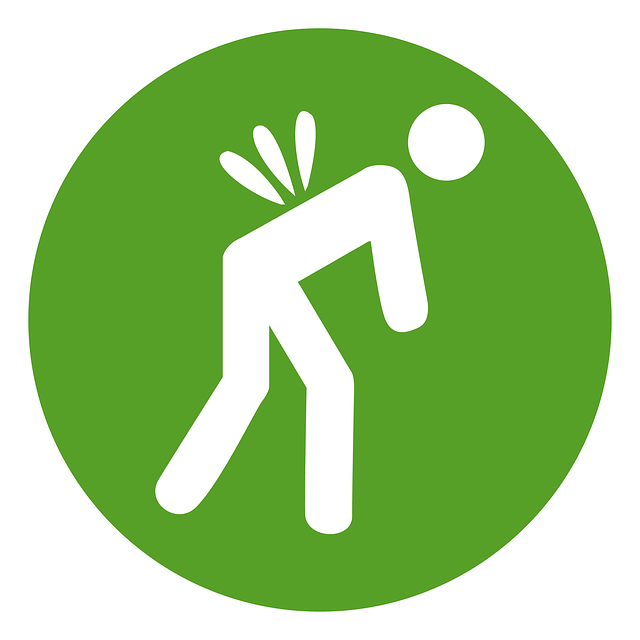Do you have back pain or sciatica? You are not alone. One out of 10 people suffers from lower back pain, and back pain is the number-one cause of job disability worldwide. Here in the US, as many as eight out of 10 Americans struggle with back pain, and this affliction has now become a primary cause of pain killer addiction.
 For many years back pain and sciatica was thought to mostly be a structural problem. Degenerative disc disease, herniated discs, scoliosis, and even arthritis were to blame. Now, a new model is emerging to explain why back pain is so prevalent in our society and why structural problems rarely correlate closely with symptoms. I firmly believe back pain is mostly a behavior problem caused by bad exercise/activity and nutritional habits. I also believe that changing these behaviors and eliminating an inflammatory diet can greatly reduce back pain.
For many years back pain and sciatica was thought to mostly be a structural problem. Degenerative disc disease, herniated discs, scoliosis, and even arthritis were to blame. Now, a new model is emerging to explain why back pain is so prevalent in our society and why structural problems rarely correlate closely with symptoms. I firmly believe back pain is mostly a behavior problem caused by bad exercise/activity and nutritional habits. I also believe that changing these behaviors and eliminating an inflammatory diet can greatly reduce back pain.
Sadly, opioid drugs are typically prescribed as a first line of treatment for back pain, not exercise, and these drugs have now surpassed both heroin and cocaine as the leading cause of fatal drug overdoses in the US. Combine chronic back pain with some depression and/or anxiety, and you have a very bad combination that could be prevented with early intervention and behavior modifications.
What causes low back pain and sciatica?
Most people assume their pain was caused by the last episode that initiated the injury. About 60% of people will blame this on something they lifted, the way they turned, how they slept, etc. But lower back pain can actually be triggered days or weeks before any discomfort sets in. Repetitive tasks like sitting, driving, forward bending, fatigue, and poor postural loads are more frequently the real cause behind back pain. Recognizing and avoiding these repetitive behaviors is the first step in making your back pain disappear for good.
How can you fix your back?
- Be patient. Seventy-five to 80 percent of back pain cases will resolve on their own within two to four weeks, even without treatment. You can certainly speed up your recovery with a few other simple steps, but giving your body the time to heal is an important first step.
 Seek help. Find a competent practitioner who treats back pain frequently for advice on how to speed up recovery. Chiropractic and acupuncture are two treatments we use daily in the office to help patients with back pain. Chiropractic adjustments are gentle corrections of spinal and hip joints to improve movement and function. Acupuncture helps to normalize pain signals by stimulating the brain to release natural opiates that reduce inflammation.
Seek help. Find a competent practitioner who treats back pain frequently for advice on how to speed up recovery. Chiropractic and acupuncture are two treatments we use daily in the office to help patients with back pain. Chiropractic adjustments are gentle corrections of spinal and hip joints to improve movement and function. Acupuncture helps to normalize pain signals by stimulating the brain to release natural opiates that reduce inflammation.- Try a natural painkiller. Instead of prescription painkillers, try some natural anti-inflammatories: curcumin, ginger, and CBD oil can all be very effective. All three of these can change the inflammatory levels of the body and decrease pain sensitivity. Currently my favorite natural painkiller is CBD oil. We have seen some amazing results with both the body cream and the liquid oil.
- Check your emotional state: Pain and emotions are both interpreted in the brain stem. The link between higher depression and anxiety emotions with higher levels of pain has been well established, as these emotions tend to reduce or slow down your body’s innate capacity for self healing. So when pain strikes, it may be a sign that you’ve let emotional difficulties and stress go unaddressed for too long. Any stress-reducing activity during these times will help reduce your back pain. Go for a walk, take a nap, read, or have a long talk with a friend. You might be surprised how it will help your back pain. If you need some extra help, try the supplements GABA, 5-htp, and CBD oil. All three can help induce a relaxed state for coping with stress during the day and help improve sleep patterns.
- Stretch and strengthen. Back pain is most commonly caused by muscle imbalances that cause bad posture. Stretching the tight muscles that bring us into the fetal position and strengthening the muscles that bring us into upright posture are a good place to start.
Hip Flexor Stretch: Start this stretch with one knee on the floor and advance the opposite foot out in front of you. From here press the hips forward while keeping the upper back upright. This should elicit a good stretch on the upper part of the thigh on the leg that has the knee on the floor. Hold for 8 seconds. Repeat 3X each side.
 Kettlebell Swing: Start with a wide squat stance and light to moderate weight kettlebell/dumbbell in your hands. Drop the weight between the legs with a squat motion keeping your back tall and your low back neutral during the lift. In a fluid motion, extend the hips back to a standing position while raising the arms to chest level. Perform multiple repetitions with only good form. Sets of 7-20 reps are recommended.
Kettlebell Swing: Start with a wide squat stance and light to moderate weight kettlebell/dumbbell in your hands. Drop the weight between the legs with a squat motion keeping your back tall and your low back neutral during the lift. In a fluid motion, extend the hips back to a standing position while raising the arms to chest level. Perform multiple repetitions with only good form. Sets of 7-20 reps are recommended.
Foundation Training: These exercises are excellent, as they work to gradually pull your body out of the movement patterns that are hurting you. The focus is on strengthening your core, which helps stabilize your spine, vertebrae, discs, and pelvis. A free YouTube video showing a 12-minute Foundation Training workout is a good place begin. I highly recommend this video to anyone with chronic back pain. Perform this video everyday for three weeks and see how your back pain reduces. https://youtu.be/4BOTvaRaDjI - Follow an anti-inflammatory diet: Inflammation will make any health problem exponentially worse. Foods high in sugar, processed grains, trans fats, and soy have all been shown to greatly increase systemic inflammation and should be avoided by anyone with chronic pain. You may not be able to eat your way to a pain-free back, but you most certainly can make a back problem less painful by eating a few anti-inflammatory foods. High Omega-3 fatty foods such as salmon, avocados, fish/flax oil, coconut oil, and olive oils can help to reduce inflammation. Likewise, dark fruits and dark vegetables like beets and pomegranates can reduce free radical damage associated with chronic pain. Turmeric, curcumin, cinnamon, and cayenne pepper are spices that have been studied and shown to be able to greatly reduce inflammation. These and many more natural foods should be increased during an acute low-back-pain episode and by those who suffer from chronic back pain. For more detailed information on an anti-inflammatory diet, check out our many blog posts on the subject. This article on how to heal the gut is a good one to start with: https://www.coreroanoke.com/how-to-heal-the-gut-part-i/
If you have any questions about how best to treat your back and sciatica pain, please contact our office today. Our goal at [Core] Chiropractic is to help our community be the healthiest it has ever been, and that begins with you!

Daryl C. Rich, D.C., C.S.C.S.
[Core] Chiropractic and Wellness






